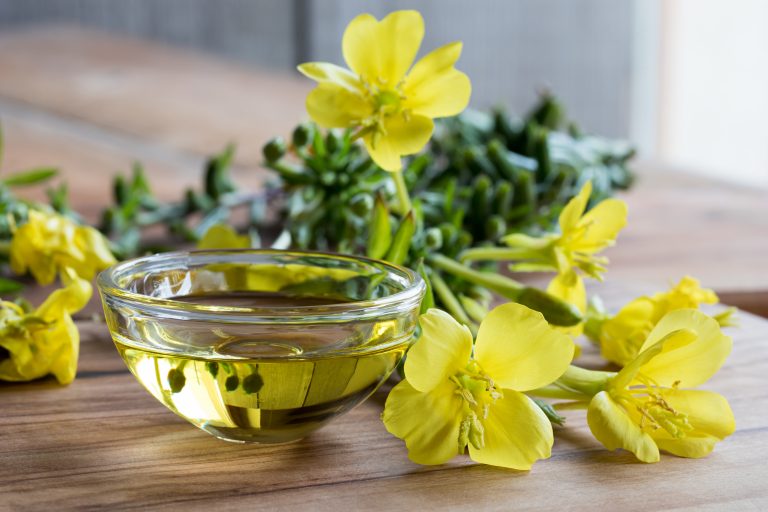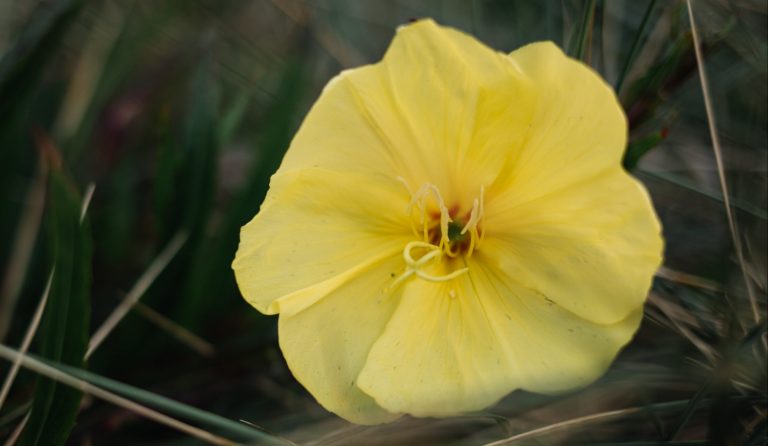The evening primrose plant has received mixed reviews from many gardeners. Some view the plant as a beauty, while others see it as nothing more than a weed. As with most things, it all depends on your preference and what you’re looking to grow in your garden.
The vibrant yellow evening primrose can grow up to 2 metres tall, although in most cases they won’t exceed 90 centimetres in length. They prefer growing in full sun in neutral, well-drained soil that stays moist.
Jump To a Section Below
- What is Evening Primrose?
- Types of Evening Primrose
- 5 Types Of Evening Primrose Plants
- How to Grow Evening Primrose
- How to Care for Evening Primrose Plant
- Is evening primrose an annual or perennial?
- Does evening primrose like sun or shade?
- Does evening primrose plant spread?
- Should evening primrose be deadheaded?
- Why does evening primrose open at night?
- How long do evening primrose seeds take to germinate?
- Should I grow evening primrose?
What is Evening Primrose?
The evening primrose, or Oenothera biennis, is a wildflower that thrives in almost any condition. The flower is native to North America and as the name implies, it blooms at night. The evening primrose is also believed to have medicinal benefits that include treating baldness and providing pain relief. The entire plant is edible and non-toxic to both humans and animals.
Types of Evening Primrose
Over 145 species of evening primrose plant exist, all native to North America. The species is renowned for their flowers, and unlike their name, they do not belong to the same family as the true primrose plant.
To illustrate the diversity of the species, we’ll share some of the more common varieties with you.
5 Types Of Evening Primrose Plants

Oenothera biennis
Also known as the common evening-primrose. This plant is native to North America but can be found throughout America. The oil from this plant is used to make evening primrose oil.
Oenothera speciosa
This species has several other names, including pink ladies, showy evening primrose, Mexican primrose, and buttercups (although they’re not true buttercups or ranunculus). The flowers bloom to white and as the plant begins to age, they turn pink. They bloom from spring until autumn and can tolerate droughts and poor soil conditions.
Oenothera fruticosa
Also known as narrow-leaved sundrops. This variety has the prettiest evening primrose flowers. These yellow flowers bloom from late spring until early summer.
Oenothera macrocarpa
Also known as Ozark Sundrops or Greencourt Lemon. This variety has brightly coloured, large, and fragrant flowers that can be quite a showstopper. They bloom from spring until autumn and can tolerate droughts and poor soil conditions.
Oenothera ‘Lemon Drop’
This vibrant yellow flower is one of the toughest varieties and tolerates heat and drought. They bloom in the spring and continue to do so well into the summer, growing up to 30 centimetres tall.
How to Grow Evening Primrose

Choosing to grow evening primrose plants is not an easy decision as the flower blooms at night, while everyone is indoors. Some of the varieties can come across as small and ratty, but luckily there are a wide variety of evening primrose plants to choose from.
One of the benefits of evening primrose is that they’re easy to grow and can survive tough conditions.
How to Plant Evening Primrose
The evening primrose plant is most commonly grown from seeds and doesn’t survive transplanting. You can buy seeds from your local nursery or collect them from living plants along the side of the road.
Where to Plant Evening Primrose
Choose a location in full sun with proper soil drainage. Sprinkle the seeds on the soil and once they have germinated, separate the seedlings to give room for growth. The soil needs to remain moist although the plant can survive dry conditions.
When to Plant Evening Primrose
The ideal time to plant your seeds is in late autumn or early spring. Within the first year, the evening primrose won’t bloom, but it will grow a leafy rosette just above the ground. Long, lance-shaped leaves will also form with a white vein in the middle of each 20-centimetre leaf. The flower stem will shoot up in the second year along with secondary branching. The flowers will also begin to grow around this time.
How to Care for Evening Primrose Plant
The evening primrose needs to be in areas with well-draining soil rich in organic matter. It also needs to be moist during the growing period, although the plant is hardy and able to survive tough conditions.
Regular pruning will help to get rid of dead leaves and spent blooms. You can collect the seeds to plant during the next season.
Common pests to look out for include slugs, snails, aphids, and spider mites. Root rot can also occur as a result of poor soil drainage or excessive watering.
Is evening primrose an annual or perennial?
The evening primrose plant is a perennial and grows in the spring and summer before dying off in the autumn.
Does evening primrose like sun or shade?
The evening primrose prefers full sun but can survive in partial shade.
Does evening primrose plant spread?
Yes, the evening primrose flower produces seeds that spread as it begins to die. The seeds are released and the wind helps to spread them.
Should evening primrose be deadheaded?
Yes, evening primrose flowers should be deadheaded to promote growth and prevent the seeds from spreading.
Why does evening primrose open at night?
The plant is nocturnal by nature and as a result the corolla only opens in the evening and promptly closes in the morning.
How long do evening primrose seeds take to germinate?
It takes three days for the evening primrose’s seeds to germinate.
Should I grow evening primrose?
There’s no doubt that the evening primrose plant has an almost magical feel to it, but the debate of weed versus flower still rages on.
It’s easy to see how a simple wildflower is regarded as a weed. However, it’s just as easy to understand the appeal of having a flower in your garden that only blooms at night, hiding its true beauty from the rest of the world. In this case, beauty truly is in the eye of the beholder!

Lily’s love for flowers and plants was nurtured in her grandmother’s vibrant garden. Over the years, this affection blossomed into a full-fledged passion for horticulture.
With formal training in botany and countless hours in her own backyard oasis, Lily has cultivated a deep understanding of plant care and garden design.